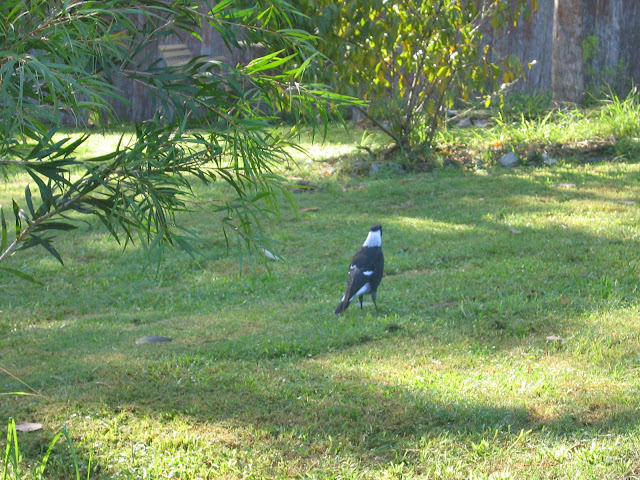Sooty OystercatcherSouth Rosedale
These birds with the striking red bill are found around Australian coasts, usually no more than 50 m from the ocean. They are vulnerable to habitat destruction. They feed on molluscs, crustaceans, marine worms, starfish, sea urchins, small fish, and drink sea water.
I saw this bird between about 6:40 and 6:45 am on 29 Dec 2008.


 Cormorant
Cormorant
Boatshed Beach
I have no idea what type of cormorant this was, drying its wings on the rocks off the headland at the northern end of Boatshed Beach around 2:40 pm on 9 January 2009.


 King Parrot
King Parrot
Often seen in small groups, and sometimes with rosella, these King Parrots were in a small tree near the house. We get lots of great birds around the house, including the magpies and kookooburras I have shown before.
5:35pm, 09 January 2009.

 Gang-Gang Cockatoo
Gang-Gang Cockatoo
New Years Day,

Gang gang cockatoo seen in the car park mound plantings, 7:57 am, New Years Day 2007
Kookaburra
10 April 2007





Kookaburra sits on the old clothes li-ine
Merry Merry King of the yard is he--ee
Laugh! Kookaburra, laugh!
Kookaburra gay your life must be.
He let me get closer and closer, checked me out, and stayed stock still.
Far nicer to know than the rats in the roof we have been battling this week. They come out to play in the evening, and party all night. Hopefully the poison has got them.
Magpies12 April 2007

These magpies, with young ones, came to pay a visit on 28 December 2006

I wonder if they were the same birds who visited at Easter? :

 Below: Myrtle Beach from the headland walk. Clothes optional, unless there is a complaint, in which case a patrol comes around and you have to get clad for a while.
Below: Myrtle Beach from the headland walk. Clothes optional, unless there is a complaint, in which case a patrol comes around and you have to get clad for a while.



 Below: Myrtle Beach is reached by this set of stairs. Making the effort reaps great rewards - it's a lovely beach for a swim.
Below: Myrtle Beach is reached by this set of stairs. Making the effort reaps great rewards - it's a lovely beach for a swim.
 Photos taken 11 Jan 2009
Photos taken 11 Jan 2009












































